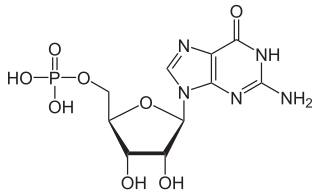
Starch or amylum is a polymeric carbohydrate consisting of numerous glucose units joined by glycosidic bonds. This polysaccharide is produced by most green plants for energy storage. Worldwide, it is the most common carbohydrate in human diets, and is contained in large amounts in staple foods such as wheat, potatoes, maize (corn), rice, and cassava (manioc).

Tapioca is a starch extracted from the tubers of the cassava plant, a species native to the North and Northeast regions of Brazil, but whose use is now spread throughout South America. It is a perennial shrub adapted to the hot conditions of tropical lowlands. Cassava copes better with poor soils than many other food plants.

Cornflour, cornstarch, maize starch, or corn starch is the starch derived from corn (maize) grain. The starch is obtained from the endosperm of the kernel. Corn starch is a common food ingredient, often used to thicken sauces or soups, and to make corn syrup and other sugars. Corn starch is versatile, easily modified, and finds many uses in industry such as adhesives, in paper products, as an anti-sticking agent, and textile manufacturing. It has medical uses as well, such as to supply glucose for people with glycogen storage disease.

Amylose is a polysaccharide made of α-D-glucose units, bonded to each other through α(1→4) glycosidic bonds. It is one of the two components of starch, making up approximately 20–30%. Because of its tightly packed helical structure, amylose is more resistant to digestion than other starch molecules and is therefore an important form of resistant starch.
Excipient is a substance formulated alongside the active ingredient of a medication. Excipients serve various purposes, including long-term stabilization, bulking up solid formulations containing potent active ingredients in small amounts, or enhancing the therapeutic properties of the active ingredient in the final dosage form. They can facilitate drug absorption, reduce viscosity, or enhance solubility. Excipients can also aid in the manufacturing process by improving the handling of active substances, facilitating powder flowability, or preventing denaturation and aggregation during the expected shelf life. The selection of excipients depends on factors such as the route of administration, dosage form, and active ingredient.

Chicken McNuggets are a type of chicken nuggets sold by the international fast food restaurant chain McDonald's. They consist of small pieces of reconstituted boneless chicken meat that have been battered and deep fried. Chicken McNuggets were conceived by Keystone Foods in the late 1970s and introduced in select markets in 1981. The nuggets were made available worldwide by 1983 after correcting a supply issue. The formula was changed in 2016 to remove artificial preservatives and improve the nutritional value.

Guanosine monophosphate (GMP), also known as 5′-guanidylic acid or guanylic acid, is a nucleotide that is used as a monomer in RNA. It is an ester of phosphoric acid with the nucleoside guanosine. GMP consists of the phosphate group, the pentose sugar ribose, and the nucleobase guanine; hence it is a ribonucleoside monophosphate. Guanosine monophosphate is commercially produced by microbial fermentation.

Buttermilk Crispy Tenders were chicken strips sold by the international fast food restaurant chain McDonald's in the United States and Canada. Chicken Selects were introduced in early 1998 for a limited time and offered again in early 2002 and late 2003 and then permanently starting in 2004. In the UK, they were launched on the "Pound Saver Menu", which offers various menu items for £0.99.
Phosphated distarch phosphate, is a type of chemically modified starch. It can be derived from wheat starch, tapioca starch, potato starch or many other botanical sources of starch. It is produced by replacing the hydrogen bonds between starch chains by stronger, covalent phosphate bonds that are more permanent. It is manufactured by treating starch with sodium tripolyphosphate (STPP) and sodium trimetaphosphate (STMP), or phosphoric chloride (POCl3). Phosphorylated cross-linked starches is a category of modified food starches within the U.S. Code of Federal Regulations. Starches treated with STMP and STPP must not exceed 0.4 percent phosphorus as residual phosphate.

Modified starch, also called starch derivatives, is prepared by physically, enzymatically, or chemically treating native starch to change its properties. Modified starches are used in practically all starch applications, such as in food products as a thickening agent, stabilizer or emulsifier; in pharmaceuticals as a disintegrant; or as binder in coated paper. They are also used in many other applications.

α-Amylase is an enzyme that hydrolyses α bonds of large, α-linked polysaccharides, such as starch and glycogen, yielding shorter chains thereof, dextrins, and maltose, through the following biochemical process:

Acetylated distarch adipate (E1422) is a food additive of the thickening agent type, and more specifically a bulking agent. It is also used as a stabilizer. This is an additive belonging to the family of modified starches.

Sour cream is a dairy product obtained by fermenting regular cream with certain kinds of lactic acid bacteria. The bacterial culture, which is introduced either deliberately or naturally, sours and thickens the cream. Its name comes from the production of lactic acid by bacterial fermentation, which is called souring. Crème fraîche is one type of sour cream with a high fat content and less sour taste.
Monostarch phosphate, E1410 in the E number scheme of food additives, is a modified starches. These are not absorbed intact by the gut, but are significantly hydrolysed by intestinal enzymes and then fermented by intestinal microbiota.
Distarch phosphate, E1412 in the E number scheme of food additives, is a modified starch. These are not absorbed intact by the gut, but are significantly hydrolysed by intestinal enzymes and then fermented by intestinal microbiota.
Acetylated distarch phosphate, E1414 in the E number scheme of food additives, is a modified starch. These are not absorbed intact by the gut, but are significantly hydrolysed by intestinal enzymes and then fermented by intestinal microbiota.
Acetylated starch, E1420 in the E number scheme of food additives, is a modified starch. These are not absorbed intact by the gut, but are significantly hydrolysed by intestinal enzymes and then fermented by intestinal microbiota.
Hydroxypropyl starch is a type of modified starch used as a food additive. I has the E number E1440. Hydroxyl propyl starch is not absorbed intact by the gut, but are significantly hydrolyzed by intestinal enzymes and then fermented by intestinal microbiota.
Starch sodium octenyl succinate, E1450 in the E number scheme of food additives, is a modified starch. These are not absorbed intact by the gut, but are significantly hydrolysed by intestinal enzymes and then fermented by intestinal microbiota.









